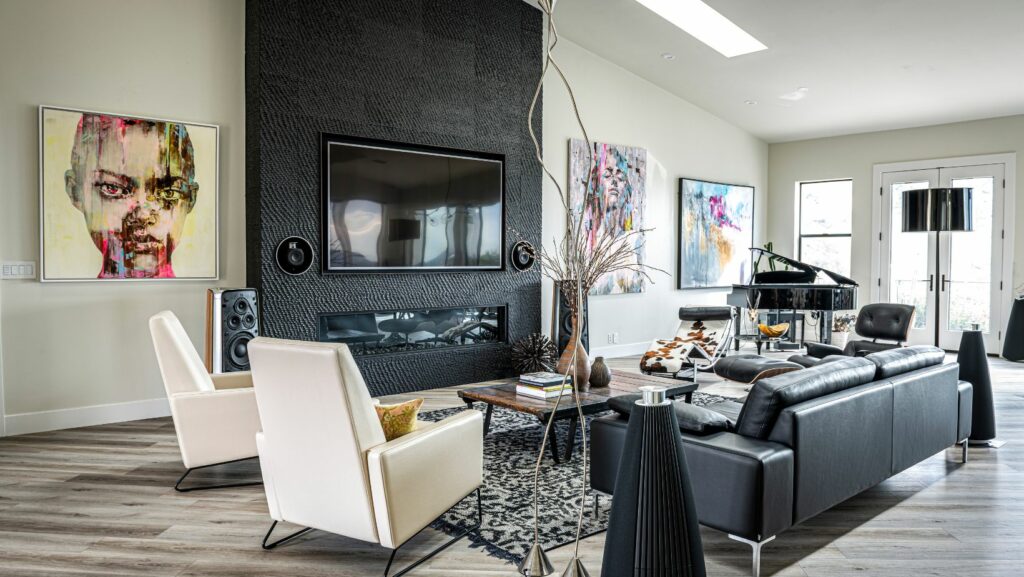Arts and Crafts Interior Design
Arts and crafts interior design finds its roots in the late 19th century Arts and Crafts Movement, which emerged as a reaction against industrialization and mass production. Inspired by the craftsmanship of medieval guilds, this design style sought to revitalize traditional skills and celebrate the beauty of handmade objects. Advocates of the movement, such as William Morris and John Ruskin, emphasized the dignity of labor and the connection between the artisan and their work.
The essence of arts and crafts interior design lies in its key principles, which include a focus on craftsmanship, simplicity, and functionality. This design style values quality over quantity, with an emphasis on using natural materials like wood, leather, and metal. Each piece is carefully crafted to showcase the skill and artistry of the maker, celebrating the imperfections that make handmade objects unique. In arts and crafts interior design, form follows function, where every element serves a purpose while exuding a sense of timelessness and elegance.
Natural Materials and Craftsmanship

Arts and crafts interior design places a strong emphasis on natural materials and craftsmanship. In this design style, you’ll often find furniture and decor items crafted from materials like wood, stone, ceramics, and glass. These elements are meticulously crafted by skilled artisans, showcasing their dedication to quality and attention to detail. The use of natural materials not only adds warmth and texture to the space but also highlights the beauty of the raw materials themselves, emphasizing the connection to nature that is central to arts and crafts design.
Earthy Color Palettes and Textiles
When it comes to color palettes in arts and crafts interior design, earthy tones take center stage. Think warm browns, soft greens, muted blues, and earthy reds – colors inspired by nature and the surrounding environment. Textiles also play a vital role in creating a cozy and inviting atmosphere in arts and crafts spaces. Wool, cotton, and linen in rich, earthy hues are commonly used for upholstery, blankets, and accent pieces. These natural textiles not only add to the tactile appeal of the room but also contribute to the overall harmonious feel of the space.
Furniture and Decorative Arts
In arts and crafts interior design, furniture and decorative arts are more than just functional pieces – they are works of art in their own right. Furniture in this style is characterized by clean lines, solid construction, and handcrafted details that showcase the skill of the maker. You’ll often find pieces with exposed joinery, hand-carved motifs, and attention to craftsmanship that set them apart from mass-produced items. Decorative arts such as stained glass, pottery, and handwoven textiles are also key features of arts and crafts interiors, adding a touch of handmade charm and individuality to the space.
Tips for Selecting the Right Materials

When incorporating Arts and Crafts design into your home, selecting the right materials is crucial. Opt for natural materials like wood, ceramics, and stone to embrace the essence of this style. Choose furniture crafted from quality hardwoods such as oak, cherry, or mahogany to ensure durability and authenticity. For textiles, look for natural fabrics like linen, cotton, or wool to maintain a tactile and inviting feel. By focusing on these materials, you can enhance the warmth and organic appeal of your living space.
Blending Arts and Crafts Features with Contemporary Decor
To blend Arts and Crafts features with contemporary decor, consider incorporating traditional craftsmanship with modern design elements. Mix handcrafted furniture, such as a Mission-style oak dining table, with contemporary lighting fixtures or sleek accessories to create a harmonious balance. Introduce pops of color through textiles or artwork while keeping the overall palette earthy and warm. By juxtaposing traditional Arts and Crafts elements with contemporary touches, you can achieve a unique and inviting interior that seamlessly fuses the past with the present.
Arts and Crafts interior design offers a timeless appeal by blending traditional craftsmanship with modern aesthetics. By incorporating handmade objects and natural materials like wood and ceramics, one can create a unique and inviting space that exudes warmth and authenticity. Mixing Arts and Crafts elements with contemporary decor allows for a harmonious balance between the past and present, resulting in a truly distinctive interior design style. Remember, when selecting materials for your space, prioritize durability and authenticity to ensure a long-lasting and genuine look. Embrace the simplicity, functionality, and beauty of Arts and Crafts design to transform your home into a sanctuary of creativity and elegance.
